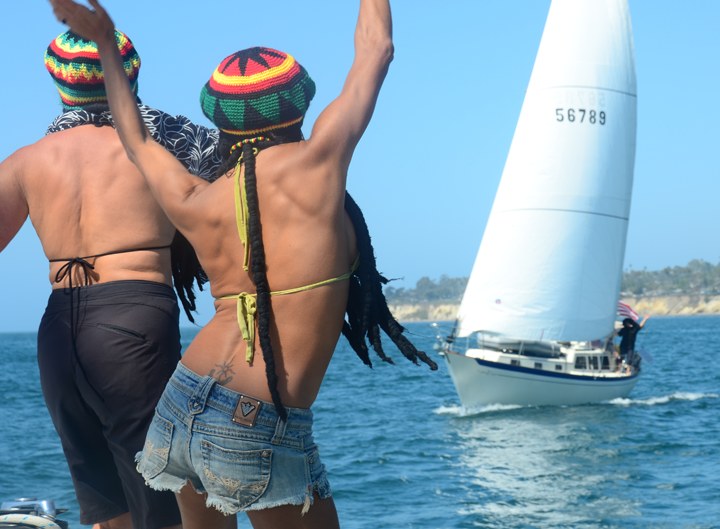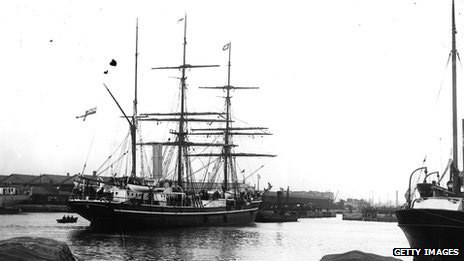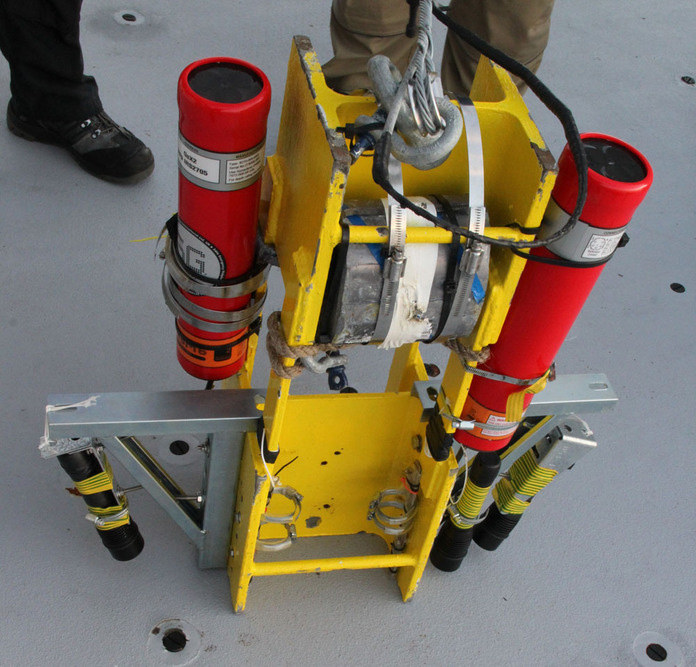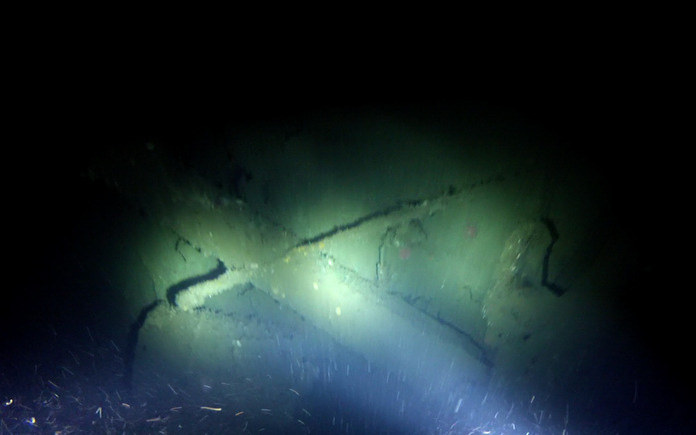
SoCal Ta-Ta, Day Three

©2012 Latitude 38 Media, LLC
Reggae Pon Da Ocean, baby! The 32 boats and 93 sailors in the first-ever SoCal Ta-Ta are sailing past Anacapa Island now on the second leg of of the week long-event that ends at Two Harbors, Catalina.
The first leg, 25 miles from Santa Babylon to Smugglers on Santa Cruz Island, was a mos spliff, mon, with Chuck and Elaine Vanderboom’s F-31 Boomerang finishing first in well under three hours. It was the Lake Havasu City couple’s first sail on the boat in two years. Even Brandon and Devani Priest’s Santa Barbara-based Coronado 25 Sea Monkey, the smallest boat in the fleet, finished quickly.
That night the first of three skipper and first mate cocktail parties was held on Profligate.
Tuesday was a lay day at Smuggler’s. Profligate transported a big group to the landing at Scorpion Bay, so a bunch of Ta-Ta folks could reggae 3.5 miles back to the beach at Smugglers. Once on the beach, everyone had to swim back to dinghies beyond the surf line. Fortunately, the water temperature was a semi-reasonable 68 degrees.
Every picture tells a story. We hope these help.
The Electro-Diesel Mystery
On September 8, we needed to get from San Diego to Santa Barbara for the start of the Ta-Ta. As usual, we figured we’d do the old two-step: 80-some miles the first day to Two Harbors, and 80-some miles the next day to Santa Barbara. In order to conserve fuel and make the best time, we’d leave San Diego at 4 a.m. when it was calm, hoping to make it most of the way to Santa Barbara before the afternoon breeze and chop came up.
We dutifully arose at 4 a.m., ready to rumble. But as we turned the key to fire up the starboard engine, something funny happened. The light on the control panel came on for one second, then went off. This meant there was no juice getting to the panel, and therefore no juice getting to the starter motor.
Naturally we tried turning the battery and ignition switches on and off repeatedly. But there was still no juice getting to the starter to fire up the engine. So we went back to sleep and had dreams of tracing down circuits with our volt meter.
The next morning de Mallorca got up, tried to start the same engine 10 times, and each and every time it worked perfectly. What the . . .?
Anything like that ever happen to you on your boat? Any idea what might have been going on? For what it’s worth, it was very damp at 4 a.m. But we’ve fired up the engine many times before in very damp conditions without a problem. Send your thoughts to Richard.
Scott’s Ship Found

One hundred years after the S.S. Terra Nova carried Captain Robert Scott and his team on their ill-fated journey to the South Pole in 1912, the wreck of that ship has been discovered off Greenland.
The Terra Nova sank off Greenland’s south coast in 1943, damaged by ice during a delivery trip to base stations in the Arctic, and was recently located by a team from the Schmidt Ocean Institute, a U.S. research company, during routine functional performance testing of echo-sounding equipment on the Institute’s flagship Falkor.
The discovery wasn’t truly random: researchers had selected the test survey site to not only test the research vessel’s mapping capabilities, but also because they knew the wreck was in the area. During sonar mapping of the seabed, a 187-ft unidentified feature matched the reported length of the Terra Nova.

A specialized camera known as a SHRIMP (Simple High Resolution IMaging Package) was dropped onto and towed across the top of the target. Footage showed the remains of a wooden wreck lying on the seabed and also identified a funnel lying next to the ship — these features together closely matched historical photos of the Terra Nova.

Mission accomplished on two levels: the discovery of the wreck of one of the most successful polar exploration vessels in history, and verification for the Schmidt Ocean Institute on the performance and operational condition of Falkor‘s multibeam echo sounders. Nicely done!
